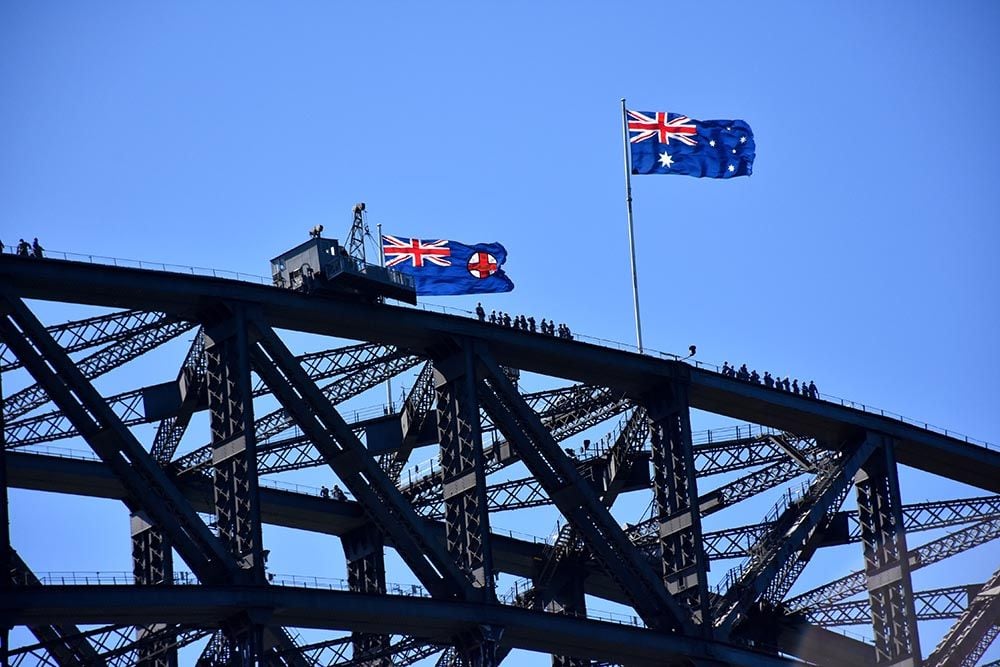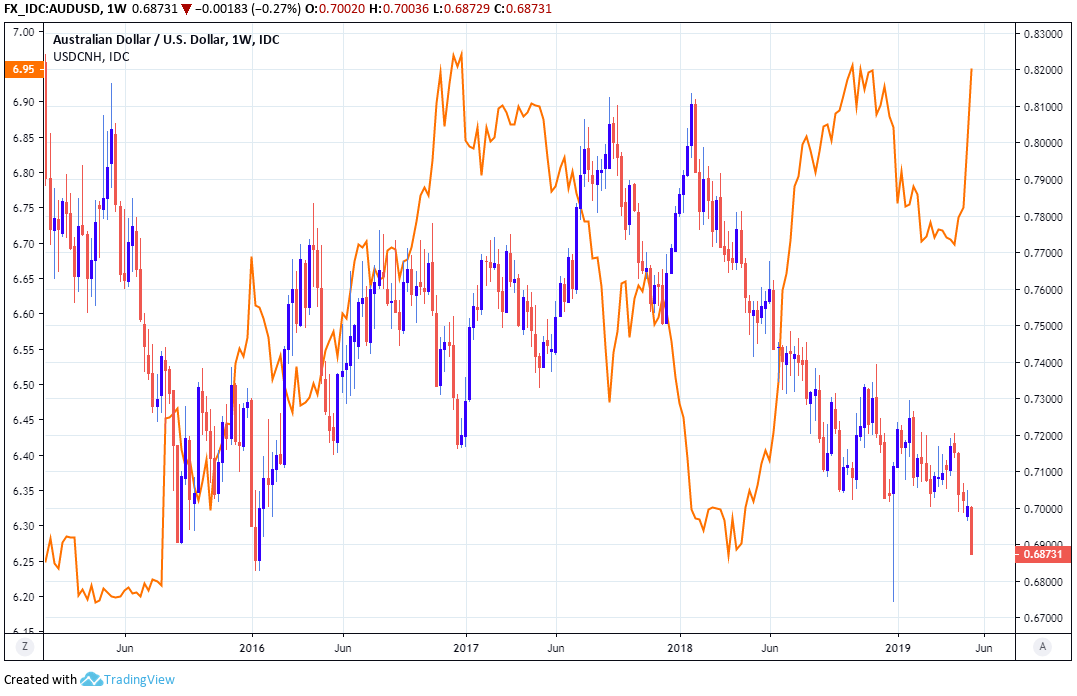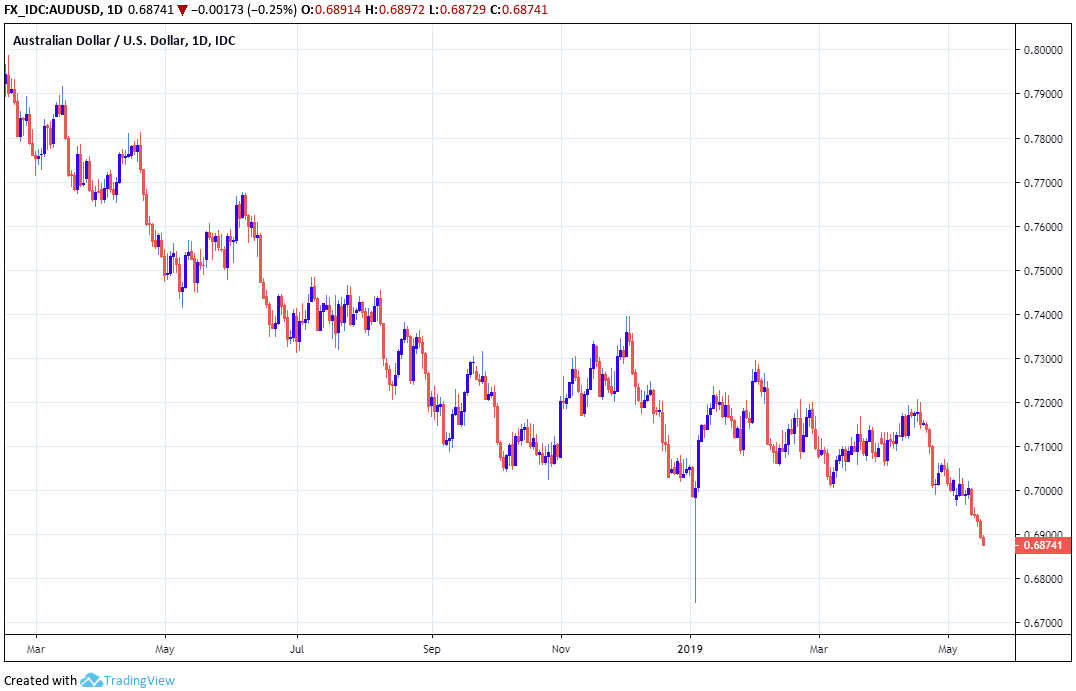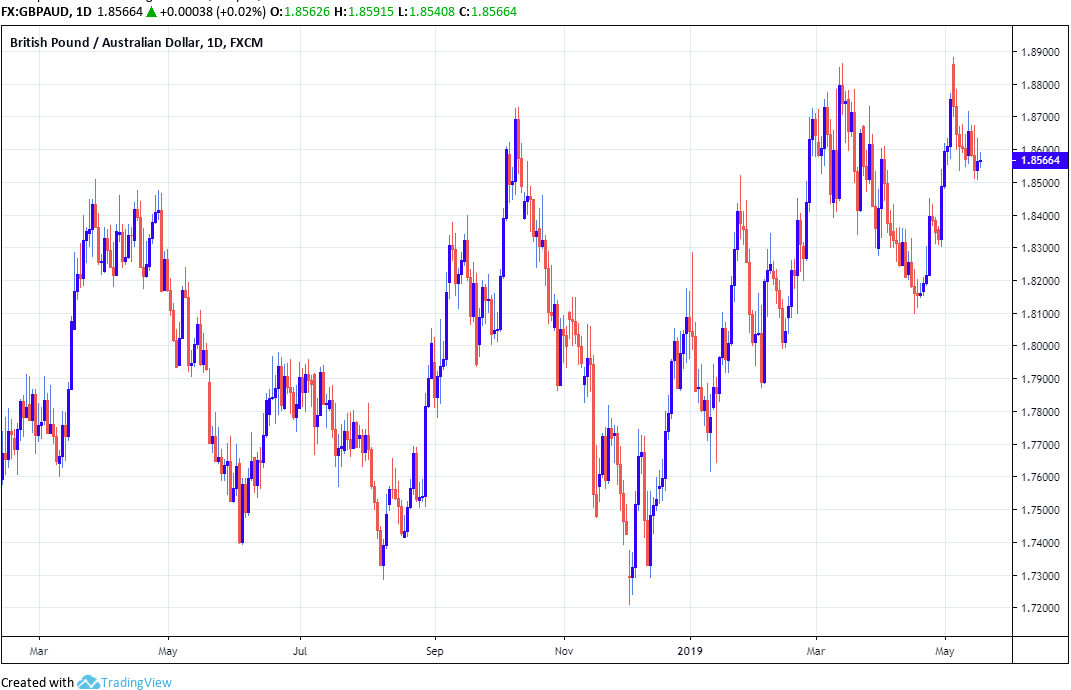Australian Dollar Chases Chinese Renmimbi Lower as NAB and ANZ Call for RBA Rate Cuts
- Written by: James Skinner

Image © Desiree Caplas, Adobe Stock
- AUD on the ropes as CNY slides and market eyes RBA cuts.
- Deutsche Bank is a buyer, Commerzbank eyes 10% AUD upside.
- NAB eyes RBA cuts in June & Aug. ANZ says rate cut "case is made".
The Australian Dollar ceded further ground to major rivals Friday as the China-sensitive currency followed the Renmimbi lower, but this hasn't stopped two major European banks from coming off the sidelines as buyers or with bullish forecasts, even as domestic lenders warn of more pain around the corner.
The USD/CNH rate has embarked upon a steep northward climb in recent weeks, rising 4%, in response to President Donald Trump's second major offensive in the so-called trade war against China and took another leg higher in the Friday session.
The AUD/USD rate has demonstrated almost a perfect negative correlation with USD/CNH rate ever since the beginning of the U.S.-China trade war back in 2018. In the last month the AUD/USD rate has declined -4.16% while USD/CNH has risen 4%.
This 'bearish' Aussie price action comes in the wake of a disappointing April jobs report from Australia, which has amplified calls for Reserve Bank of Australia (RBA) interest rate cuts, and as global financial markets prepare for a serious and protracted U.S.-China economic conflict.

Above: AUD/USD rate shown at weekly intervals, alongside USD/CNH (orange).
None of the trade war or rate cut talk has prevented two of Europe's major banks from coming off the sidelines this week with either bullish forecasts for the Antipodean currency, or recommendations that clients pile in and buy the Aussie. They say the market has gone too far betting against the Aussie.
"2019 has seen a dovish tilt by many central banks, including the RBA. But we think the risk is that the market has over-priced the RBA relative to peers," says Time Baker, a Sydney-based strategist at Deutsche Bank, in a recent note to clients. "The market has been placing a lot of weight on slower GDP growth and housing risks. But GDP growth is prone to upward revision, whereas the unemployment rate is a true signal."
Baker says that with Australian unemployment at an eight-year low and given the economy continues to create new jobs, the outlook for inflation is not as bad as the market has come to believe. But that was written before the release of April jobs data, which showed unemployment rising 20 basis points to 5.2%.
The Australian unemployment rate has now risen 0.3% since February, in a move which many say could draw the RBA off the sidelines and force it into an interest rate cut as soon as June. But Baker's main ideas on the Aussie are to bet on an increase in value relative to the New Zealand and Canadian Dollars.
New Zealand's central bank has already cut its interest rate once this year, taking down to the same 1.5% level of the Aussie cash rate, and could do so again. This is while prices of Australia's main export, iron ore, continue to outperform those of Canada's main export which is oil.

Above: AUD/USD rate shown at daily intervals.
"The external picture is more challenging. A risk-off tone is likely to persist given trade tensions and the potential hit to global growth. Even though AUD participated very little in the risk asset upswing this year, it’s likely to struggle vs defensive currencies until trade tensions subside," Baker warns.
The Deutsche Bank view is not dissimilar to that of Commerzbank, Deutsche's main rival in the German market, which came out Friday warning of further losses in the short-term but also predicting a medium-term recovery.
"The current 2-3 rate cuts that are priced in seem excessive to us though so that, principally, we expect higher AUD levels. In view of the continued uncertain market environment we do not exclude, however, that short term depreciation will continue," writes Esther Maria Reichelt, an analyst at Commerzbank.
Reichelt forecasts the Reserve Bank of Australia will not actually cut its interest rate this year, but that it will lift the cash rate to 1.75% in 2020. On this basis, she and the Commerzbank team issued very bullish forecasts for the Australian Dollar this year only two weeks ago.
Commerzbank forecasts AUD/USD will rise back to 0.76 before year-end, which is more than 10% above the current market price, which they expect will push the Pound-to-Australian-Dollar rate down from 1.85 Friday to 1.82 by year-end.

Above: Pound-to-Australian-Dollar rate shown at daily intervals.
"We have changed our view on the cash rate, bringing forward the timing of forecast rate cuts to start in June. Previously, we had forecast the RBA to cut the cash rate by 25bp in July and again in November, taking the cash rate to 1%," says Alan Oster, chief economist at National Australia Bank (NAB). " We also see a risk that the RBA delivers additional policy stimulus by early 2020, either by cutting again or opting for an alternative policy measure."
Oster says Thursday's unemployment report for April provides a clear indication the economy is weaker than the Reserve Bank of Australia had deigned to believe at its May policy meeting, which he says will prompt an interest rate cut on June 04 and another in August.
If Oster is right the Aussie Dollar could be in for a torrid few months because, as much as the financial markets have been betting heavily on rate cuts coming this year, they're still not prepared for that level of cuts quite so soon.
Pricing in the overnight-index-swap market implied on Friday a cash rate of 1.29% on June 04, while the implied rate for August 06 was just 1.10%. Both of those numbers are substantially below the current 1.5% rate but they're not quite at the 1.25% and 1% rates that would prevail following two cuts.
"The case for a rate cut is made, in our view. The degree of slack in the labour market is too great to generate wage growth that would lift inflation into the RBA’s target band (Figure 3 below). We thought this was clear ahead of the RBA’s May meeting, yet no cut was delivered," says David Plank, head of Australian economics at Australia & New Zealand Banking Group (ANZ).
Plank and the ANZ team say they'll wait for a May 21 speech from RBA governor Philip Lowe, and for the minutes of the latest policy meeting which are due out at the same time, before "finalising" their call on exactly when a rate cut will come but they're clear in saying that lower interest rates are imminent.
Time to move your money? Get 3-5% more currency than your bank would offer by using the services of foreign exchange specialists at RationalFX. A specialist broker can deliver you an exchange rate closer to the real market rate, thereby saving you substantial quantities of currency. Find out more here.
* Advertisement




